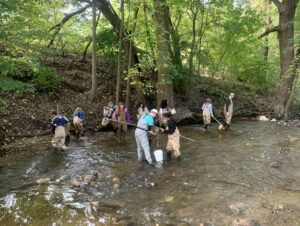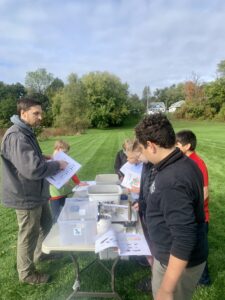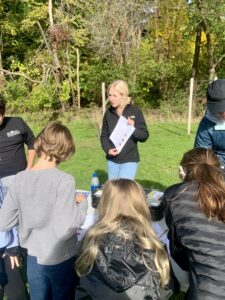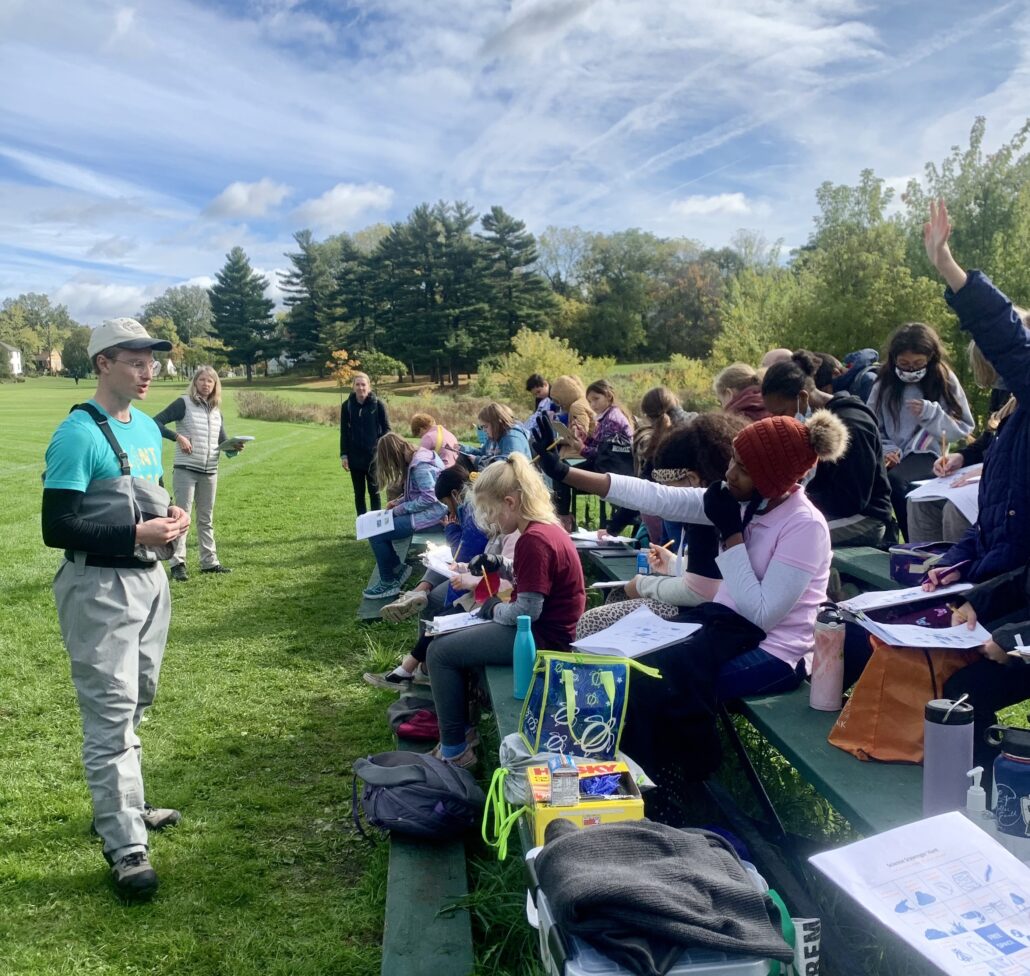Written By: Kat Lykins
Michiganders pride themselves on their home state’s abundance of freshwater. Each summer, families flock to the shores of Lake Michigan or gather at one of the thousands of inland lakes to enjoy the warm weather and admire the state’s natural beauty. Despite many Michigan residents recognizing the importance of the waterways, many know very little about the organisms which live within them and are unaware of the water’s current quality.
Understanding these is a crucial piece of Michigan’s water conservation and protection.
The West Michigan Environmental Action Council (WMEAC), under the leadership of the Education Programs Manager, Kyle Hart, invites schools in the West Michigan area to learn about more than what meets the eye of Michigan’s watersheds. In late October, I was fortunate enough to witness the work of Hart and WMEAC’s seasonal staff Emma Miedema and Matt Bain firsthand as they walked Grand Rapids Montessori 4th and 5th-grade students through a series of stations. These stations were centered around educating children about water quality by surveying aquatic macroinvertebrates (organisms that lack a backbone and are visible to the naked eye) in Coldbrook Creek, a small stream located at Grand Rapids’ Highland Park. While observing the work of Hart, Miedema, and Bain, it was evident their contributions and knowledge were vital to the student’s success in learning.

Kyle Hart offered a hands-on experience that provided an opportunity for students to put on water-repellant waders and hop into the chilled water of Coldbrook Creek. It was then up to them and their nets, which WMEAC provided, to catch tiny organisms floating within the creek. I watched as the students patiently stuck their nets in the water, spinning them every so often, in hopes of finding an organism stuck there. While the students’ collection grew, Hart placed each organism in a large bucket which would then be carried to another station, ready for observation and macroinvertebrate identification.

The next station, led by Matt Bain, was packed with both enthusiasm from the children and knowledge from Bain. The collection of macroinvertebrates, which included a variety of net-spinning caddisflies, damselfly nymphs, black flies, and most abundantly scuds, were very telling of the creek’s current state. These particular macroinvertebrates are very resilient to pollution and can survive and withstand poor water conditions and quality. Although the students are just beginning to understand the complete picture of Coldbrook Creek’s health, the organisms occupying the creek provided information that the water is somewhat polluted, likely due to the stream’s urban location and potentially the fertilizers used on the large grass lawn nearby.

The final station was official testing of the water’s temperature, pH, dissolved oxygen level, nitrates, and phosphates. Emma Miedema gave the students a brief and engaging explanation of what each test indicated and how results affect organisms inhabiting the creek and the surrounding landscape. The students were energetic and enthusiastic about providing their knowledge of the subject matter but listened to Miedema as she shared her knowledge of the watershed.
WMEAC’s Teach for the Watershed program may just be one of the best opportunities children have for learning about their local waterways. The program, which includes both an in-classroom presentation and field-based experience, allows students to explore and engage with West Michigan’s water health while enjoying the outdoors. Observing the Grand Rapids Montessori students gave me hope for the future of Michigan’s watersheds and waterways.
Despite their youth, many were passionate and informed, showing genuine care in protecting their home state’s abundance of water and the organisms which reside within these habitats.
Photo Credit: Kat Lykins

